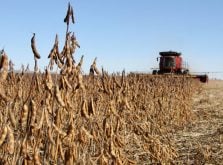Twenty thousand tonnes isn’t a lot of oats, but by subsidizing their export, the European Union has fired a shot across the bows of the North American market.
Prices on the Chicago Board of Trade oats contract quickly fell by about eight cents per bushel to about $1.40 US per bu. after the Oct. 30 announcement of the first EU oat export subsidy of the 2003-04 crop year.
“It’s a pretty strong signal that the EU is going to export everything they have to out of Sweden and Finland,” said Statcom Ltd. oat market analyst Randy Strychar.
Read Also

Pakistan reopens its doors to Canadian canola
Pakistan reopens its doors to Canadian canola after a three-year hiatus.
The EU’s willingness to re-enter the export subsidy game is “not a surprise,” said Strychar, who had urged farmers to price some of their oats before the Scandinavians started exporting.
He thinks EU oats will now set both the ceiling and floor for the market – a marked contrast to the past two years when the Canadian crop set the market.
Oats will probably trade between $1.35-$1.55 US per bu., he said.
Prices probably won’t fall beneath $1.35 because that would demand high subsidy levels, which the EU would not want to grant.
Once European subsidies stop, EU oats would stop being sold to the North American market, removing the downward pressure on prices.
North American prices have been weak since prairie farmers harvested a crop 28 percent larger than last year.
Prices have been far below those of the past two drought-reduced crops. Farmers have not been selling many oats this autumn, but that isn’t affecting the market because buyers feel no compulsion to buy more than their immediate needs.
That isn’t likely to change.
“You’ll find U.S. mills coming into the market and paying premiums for whatever they need, then running,” said Strychar.
“There’s no steady, consistent buying from the Americans at higher levels.”
Farmers should keep in contact with their buyers to capture short-term premiums.
“The farmer’s going to have to be fast on his feet,” said Strychar.
In the drought years, processors and mills tried to tie up supply well in advance to make sure they could meet their needs, which will not be a problem this winter.
Up to the EU announcement, oat prices slowly rose from harvest, similar to the rise in the past two years. But this year oats do not have much breakout potential, unless they are carried along by sister commodities.
“It’s going to be really hard to rally this board,” said Strychar.
“The only thing I can see doing it is if corn keeps running higher.”















